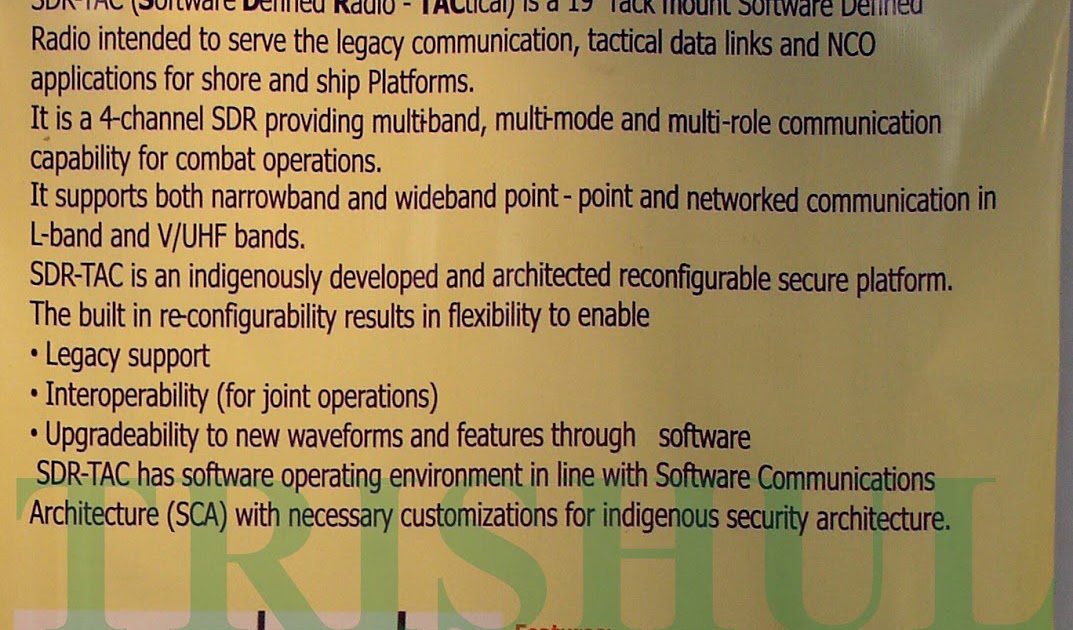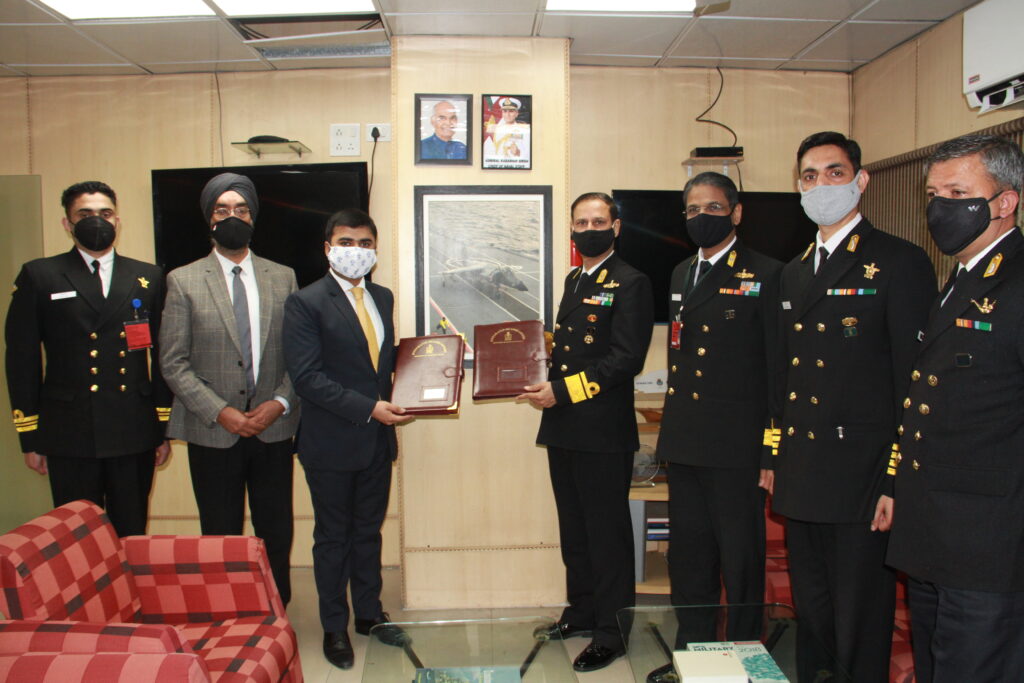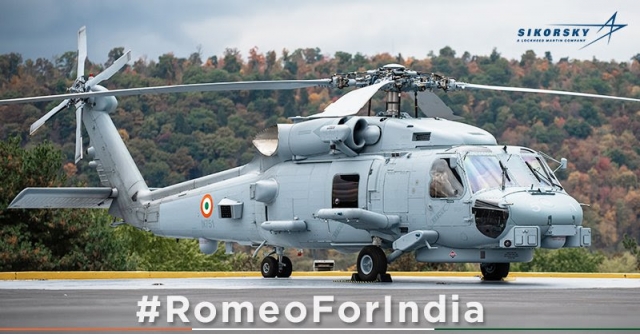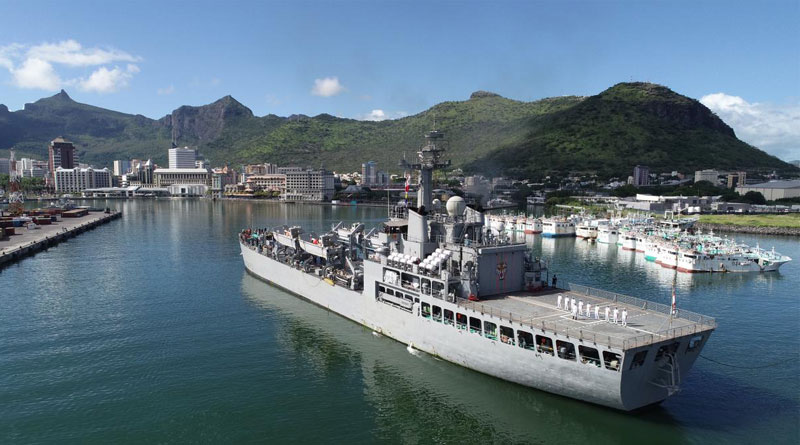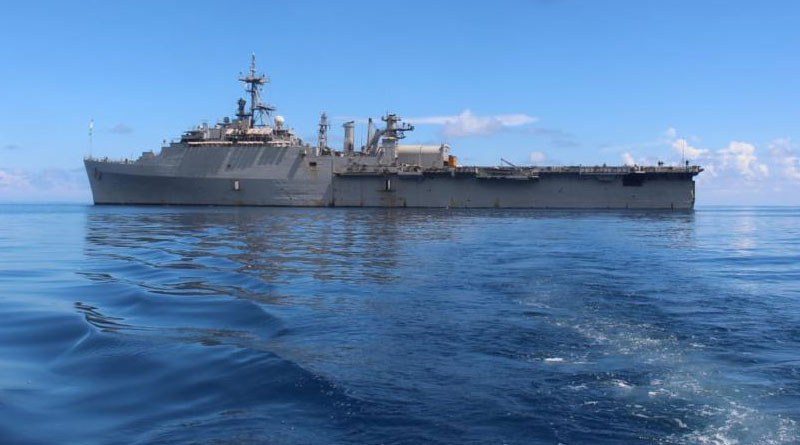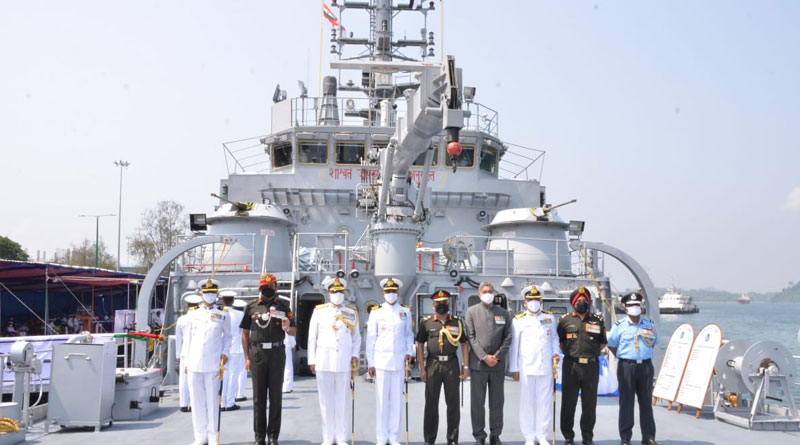All credit to respective owners
Desi TAl developed by NSTL, successfully cleared its maiden flight trial with a parachute system from the Indian Navy’s Ilyushin Il-38 (Dolphin)

alphadefense.in
Desi Advanced Light Torpedo (TAL), developed by the Naval Science and Technological Laboratory (NSTL), successfully cleared its maiden flight trial with a parachute system from the Indian Navy’s Ilyushin Il-38 (Dolphin) maritime patrol aircraft on 08th March 2021. This is a big development, it was the first such trial where an indigenously lightweight torpedo was fired from a fixed-wing aircraft (Earlier torpedoes were fired from helicopters, ships, and Submarines).
Rebirth of Dolphin:
The Ilyushin Il-38 also called “Dolphin” is a long-range fixed wing maritime patrol and anti-submarine warfare aircraft. The aircraft was designed in the Soviet Union from Ilyushin Il-18 turboprop transport aircraft. NATO Calls this aircraft as “May”.
The Indian Navy currently operates 2 units of these aircrafts, while 5 units were acquired in 1977 from Soviet Union. The Navy received 3 units in 1977 and another 2 in 1983. These aircraft were Ex-Soviet Naval Aviation machines and 3 of these are retired given to the various accidents. Initially, before the delivery of these aircrafts, the aircrafts were upgraded. The Indian version had pylons on the side of fuselage to carry “Sea Eagle” Anti-ship Missile.
The BAe Sea Eagle is a medium weight (580 KG) sea-skimming subsonic (Max speed 0.85 Mach) anti-ship missile designed and built by BAe Dynamics (now MBDA). This missile system with a warhead of 230 KG was designed to sink or disable ships up to the size of aircraft carriers in an environment of heavy jamming and other countermeasures including decoys.
In addition to Sea Eagle, Dolphin can fire KH35 anti-ship missile as well. Although the KH35 missile integration has multiple glitches that were solved only in 2017. During Torpex 2017 the first ever KH35 was fired from this aircraft.
This submarine hunter has two internal weapons bays where it carries sonobuoy and weapons. The frontal weapons bay carries sonobuoy whereas the rear carries weapons. The aircraft can carry a wide variety of weapons from depth chargers to anti surface missiles.
Combination of Brahmos & IL38 SD
The Brahmos supersonic cruise missile of Indian armed forces is one of the deadliest cruise missiles on the planet. The missile system was recently upgraded with a range of 600 KM and further it will go up to 800 KM in future. The IL38 SD will carry two of these missiles on the either side of fuselage. The air launched version of Brahmos is already tested and perfected on Su30 MKI, IL38 is slated to get this missile as per a 2009 media release of
Brahmos Aerospace.
The long legs of this aircraft coupled with the Bramhos missile that can hit a target with a pinpoint accuracy with a speed of over 3 Mach will be deadly combo. With maximum take-off weight of around 68 tons, the Il-38 has a crew of seven and a range of 9,500 km (5,126nm).
If the aircraft is categorised the it can classify as P-3 Orion class aircraft, which performs a similar ASW role with the U.S. Navy and many others including Pakistan.
Desi light torpedo:
The advance light torpedo developed by NSTL is one of the finest light torpedoes in the world today. The torpedo and its release mechanism, in which the light torpedo, on safe separation from the IL38 SD aircraft, descends with the help of a parachute and the torpedo release mechanism detaches the parachute from the assembly, enabling the torpedo to continue its operation in waters. The parachute is designed by ADRDE, Agra.
The TAL can track multiple targets simultaneously using state-of-the-art processor-based signal processing algorithms. The torpedo activates as soon as it enters the sea water using water activation mechanism. This 220 KG torpedo can carry a warhead of 50 KG, has an operational range of 19 KM and can travel with speed of 33 Knots.
This all electric propulsion torpedo equipped with acoustic homing (Active / Passive) can operate up to a depth of 540 meters. Once launched in around 6 minutes it can destroy the target with an absolute certainty. The most difficult part in the development of this torpedo was to develop a torpedo which could sustain its efficiency, in particular the manoeuvrability and structural integrity while travelling from the air medium to water after being launched from air.
Growing Chinese presence?
It’s a known fact that china today has largest navy in the world though the quality and types keep it far behind united states, despite that it remains a big challenge for Indian Navy in Indian Ocean region. The submarine fleet of Chinese navy is growing simultaneously with a great pace. Thus, the anti-submarine systems of the navy need constant upgrade. The area of interest of Indian Navy is vast and therefore it requires modern systems as well as numbers. The Indian Navy already operates 9 Boeing P8 I – Neptune aircraft. The aircraft is capable of anti-submarine warfare (ASW), anti-surface warfare (ASUW), and shipping interdiction roles. In addition, 3 more aircraft are on order and 6 more are approved. Upon delivery the total number of aircraft operational with Indian Navy will be 18. Navy could acquire more of these in future.
The IL38 SD upgraded with the state-of-the-art sensors and equipment will compliment the P8-I fleet of Indian Navy.
What is the significance of the combo?
Although the P8-I is a state-of-the-art system and it can carry Mark 54 torpedo and AGM 84 Harpoon missile, but the system cannot carry Brahmos and indigenous torpedo.
IL38 SD aircraft when equipped with the Brahmos, KH35, and Indigenous advance torpedo will get rebirth as a hunter-killer and that will be really significant development.




